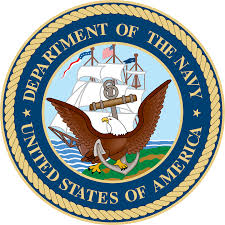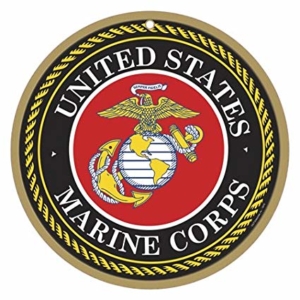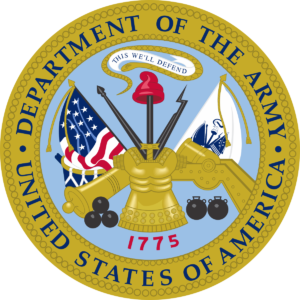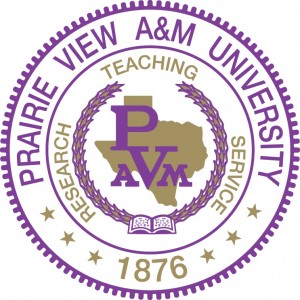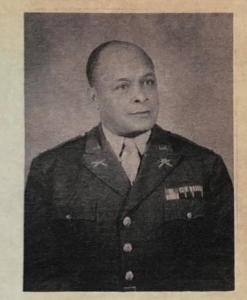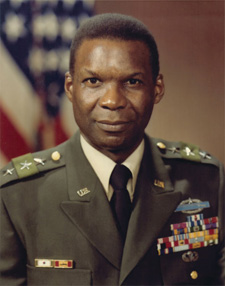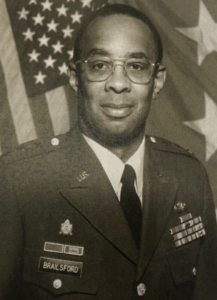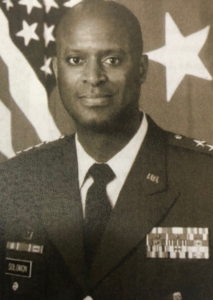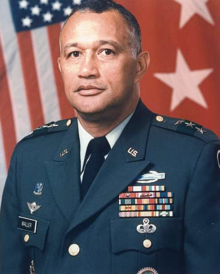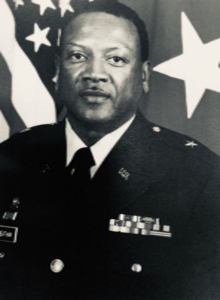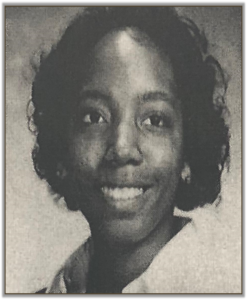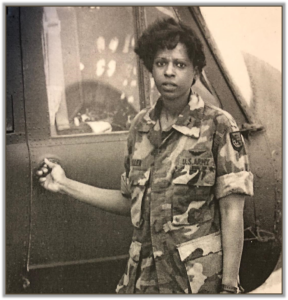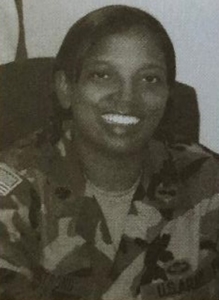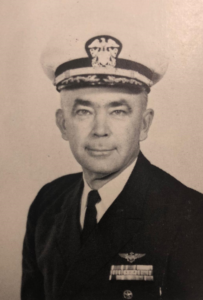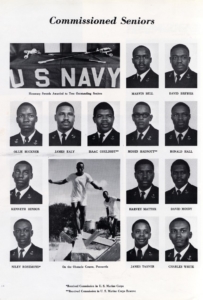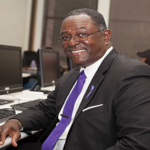“History, Honor and Service to Country”
Through the Years with Reserve Officer Training Corps Programs at Prairie View A&M University
By Zachary Lee, PVAMU history major, and TIPHC student assistant
This page is presented to celebrate the Reserve Officer Training Corps programs at Prairie View A&M University: the Army ROTC, which is the only unit at a historically black college in Texas, and the Navy ROTC Unit which is observing its 50th anniversary this year. Prairie View was the first HBCU to house both Army and Navy ROTC programs simultaneously. Highlighted here are the military programs that are cornerstones of tradition and service to the university, the public, and our nation. Overall, we give thanks to each graduate of both the Army and Navy ROTC programs at Prairie View as well as their unit commanders and military science professors for their dedication to the nation and the university and the enduring nature of the memories they shared and the standards they have set for future generations who will carry the torch to similar successes.
Army Reserve Officer Training Corps history
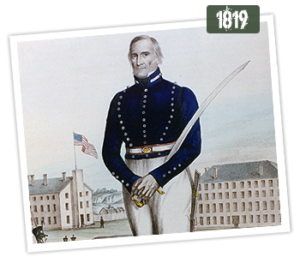 The Army ROTC program began in 1819 when Captain Alden Partridge (left), a former superintendent of the U.S. Military Academy, founded the American Literary, Scientific, and Military Academy – known today as Norwich University. It was there that training in military tactics was first offered as a component of the curriculum of a civilian college in America. Under this concept, college-educated men would receive a strong foundation in military tactics. During times of national crisis, these “citizen- soldiers” would be available for service in the militia. The Morrill Act of 1862 spurred additional availability of military training on American college campuses. Enacted during the Civil War, the Morrill Act provided federal lands for state-supported colleges and
The Army ROTC program began in 1819 when Captain Alden Partridge (left), a former superintendent of the U.S. Military Academy, founded the American Literary, Scientific, and Military Academy – known today as Norwich University. It was there that training in military tactics was first offered as a component of the curriculum of a civilian college in America. Under this concept, college-educated men would receive a strong foundation in military tactics. During times of national crisis, these “citizen- soldiers” would be available for service in the militia. The Morrill Act of 1862 spurred additional availability of military training on American college campuses. Enacted during the Civil War, the Morrill Act provided federal lands for state-supported colleges and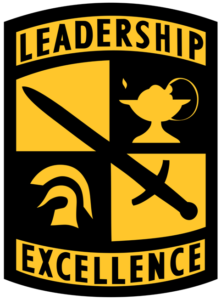 required those schools to offer training in military tactics.
required those schools to offer training in military tactics.
The Army ROTC program, as we know it today, came into being with the passage of the National Defense Act of 1916 signed by President Woodrow Wilson. This represented the first time that the military instruction on America’s college campuses was brought under a single, federally controlled program. A total of approximately 50,000 men who had received some form of military instruction on college campuses ultimately would serve during the First World War and those numbers increased for other conflicts — World War II, the Korean War, Vietnam, and the Middle East — and would include soldiers who started their military careers in Prairie View’s AROTC unit.
Army ROTC on “The Hill”
In 1878, under the Morrill Land Grant College Act of 1862, the teaching of Military Tactics was initiated at Prairie View A&M. However, the Army Reserve Officers Training Corps unit was not organized until 1918 during WWI, and in 1943, the AROTC Department was designated as a Senior Division Unit, Infantry Branch, the first such unit hosted at a Historically Black College or University.
To start the new program, Colonel West Alexander Hamilton, a veteran of both world wars, was appointed to lead the first Senior Unit as the Professor of Military Science and Tactics in 1942-1943 and 1947-1948. A Washington, D.C. native, Hamilton enlisted in the D.C. National Guard in 1905 and advanced to the rank of colonel before World War II. He received an honorary National Guard promotion to brigadier general in 1983, but was always known as “The Colonel.”
Col. Hamilton taught in D.C.-area schools for 10 years, but in 1917 decided to pursue a full-time career in the military. During World War I, he had assignments in the U.S. and in Europe. He retired from active Army duty with the rank of colonel in 1933 and returned to the reserves. During World War II, he commanded the 366th Infantry Regiment at Fort Devens, Mass. then came to the Prairie View ROTC program. During his tenure, he produced the first class of students to be commissioned in 1947 for the Army ROTC. The class only had two students, 2nd lieutenant Harvey Dickerson, and 2nd Lieutenant Jafus Cavil.
A longtime friend described Hamilton: “He demanded and got excellence and superior performance on everyone’s part.”
Hamilton died in 1985 and in his Washington Post obituary he was recalled as saying, “I wanted to be an engineer, but there wasn’t any money . . . in my family. So I did with what I had. Poor people don’t have to be hoodlums or criminals. My family was poor, and I was poor, so I say that from my own experience.”
Throughout the unit’s history, it has produced some of the country’s finest soldiers who have helped the Department of Defense efforts to maintain viable military forces in defense of the country. The first graduates of the Panther Battalion were commissioned at Ft. Hood, Texas in 1947. Since then more than 1,400 officers have been commissioned into the U.S Army. Graduates earned commissions in Combat Arms branches of Aviation, Air Defense Artillery, Field Artillery, Infantry and Armor, Combat Support branches of Engineers, Military Intelligence, Military Police and Signal Corps, and Service Support Branches of the Finance Corps, Ordnance Corps, Transportation Corps, Medical Service Corps, and Adjutant Corps.
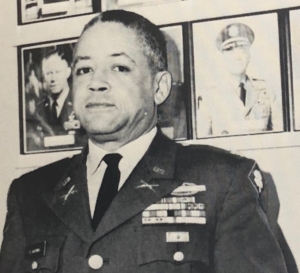 Lt. Col. Arthur Fearing (left) was a veteran of WWII and the Korean War, where he fought with the 366th Infantry and the 1st Calvary, respectively, before taking command of the PVAMU unit as the seventh professor of military science.
Lt. Col. Arthur Fearing (left) was a veteran of WWII and the Korean War, where he fought with the 366th Infantry and the 1st Calvary, respectively, before taking command of the PVAMU unit as the seventh professor of military science.
Among the many outstanding members who emerged from Prairie View’s AROTC is Lieutenant General (Ret.) Julius W. Becton Jr., who became the fifth President of Prairie View A&M – and the first alum (1960, B.S. Mathematics) to hold the position – from 1989 to 1994. In the Army, Becton was promoted to Brigadier General in 1972 and commanded the 1st Cavalry Division, the United States Army Operations Test and Evaluation Agency, and the VII U.S. Corps. With that appointment in 1978, General Becton became the first African American officer to command a Corps in the U.S. Army.
Gen. Becton is one of seven general officers produced by the PVAMU AROTC program:
(Left to right: Becton, Brailsford, Solomon)
Lieutenant General (Ret.) Marvin D. Brailsford, PVAMU Class of 1959, B.S. Biology: During his 33-year career, Gen. Brailsford held a variety of command and staff positions including commanding general of the U.S. Army Armament, Munitions and Chemical Command, the 59thOrdnance Brigade, the 60th Ordnance Group, the 101st Ordnance Battalion, and staff assignments in Vietnam, Germany and the United States. Throughout Operations Desert Shield/Desert Storm, he provided expert guidance and direction in support of the largest and swiftest strategic movement of munitions ever conducted.
Lt.Gen. (Ret.) Billy Solomon, 1966, B.S. Agriculture: Following assignments at Fort Polk, Louisiana and Fort Hood, Texas, Solomon was promoted to Brigadier General on October 1, 1992. He then served as Commander of the Joint Logistics Task Force for United Nations operations in Somalia and then Assistant Chief of Staff for United States forces in Korea. Over the last decade of his service, General Billy Solomon led the development of Army doctrine, training, material, and IT requirements for the Combat Service Support Branches of the U.S. Army.
(Left to right: Waller, Cheatham, Parker)
Lt.Gen. (Ret.) Calvin Waller (deceased), 1959, B.S. Agriculture: Gained notoriety during the Persian Gulf War (1990-91) as the Deputy Commander-in-Chief for military operations with United States Central Command (Forward). At that time, Waller was one of the highest-ranking African American officers in the U.S. military and served as deputy to General Norman H. Schwarzkopf and proved to be vital to the victory though his contributions were unheralded. After his death on May 9, 1996, Gen. Waller, was praised for his 30 plus years of service by President Bill Clinton: “During a distinguished career which culminated in his service as Deputy Commander of U.S. Forces in the Persian Gulf during Operation Desert Storm, General Waller achieved prominence as a skillful and disciplined professional and a caring, enthusiastic commander. His rise from humble beginnings to one of the highest-ranking African-American officers in the U.S. military through stalwart determination and a record of excellence served as an inspiration to minority and non-minority officers.”
Major General James Cheatham, 1971, B.S. Civil Engineering: From March-August 2003 and July 2005-May 2006, Major General Cheatham was on active duty and was assigned as Acting Director of Military Programs and the Deputy Chief of Engineers-Reserve Components, U.S. Army Corps of Engineers, Washington, D.C.
Maj.Gen (Ret.) Julius Parker, 1955, B.S Biology and Chemistry: Parker rose to the rank of major general and became the highest-ranking African-American Military Intelligence Officer in the history of the U.S. Army. He is also a direct descendant of Quanah Parker, the last chief of the Comanche nation. Gen. Parker was the first Chief of Staff of the US Military Intelligence Corps. During his 1985 – 1989 assignment as Commanding General, United States Army Intelligence Center and Commandant US Army Intelligence School he designated, his personal motto from his college days, “Always Out Front” as the MI Corps Motto which was approved by the US Army Institute of Heraldry as the official motto of US Army Military Intelligence Corps.
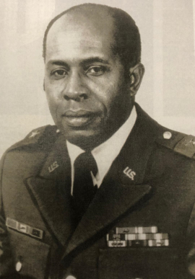 Brigadier General (Ret) Johnnie Forte, 1956, B.S. Political Science: General Forte served in a variety of command and staff positions in Korea, Vietnam and Germany during some of his 31 years in the military. His posts included that of assistant commander of the 8th Infantry Division in Germany. He had also held personnel and administrative staff positions with the U.S. European Command and at the Pentagon.
Brigadier General (Ret) Johnnie Forte, 1956, B.S. Political Science: General Forte served in a variety of command and staff positions in Korea, Vietnam and Germany during some of his 31 years in the military. His posts included that of assistant commander of the 8th Infantry Division in Germany. He had also held personnel and administrative staff positions with the U.S. European Command and at the Pentagon.
Throughout a century of the university’s Army ROTC Unit, over 1,400 officers have been commissioned in the U.S. Army and have served in offices and positions that included Military Police, Air Defense Artillery, Military Intelligence and much more. Prairie View ROTC graduates were integral participants from 1990 to 1991 for Operation Desert Shield and Desert Storm in the Middle East. Though these soldiers faced many challenges, their bravery and skilled training, which began in the PVAMU program, enabled them to excel in their leadership roles and bring pride and honor to the school as they successfully bore the heavy mantle of combat leadership.
The university’s program has also included several outstanding female soldiers:
(Left to right: Gross, Miller, Strong)
Shaune (Tubbs) Gross was the first female Battalion Commander, 1978-1979.
2Lt. Gail Miller was the first female aviator commissioned and became the fifth African- American female Army pilot in 1984.
Lt.Col. Carol Strong served as the unit’s first female professor of military tactics and science from 2004-2008.
NROTC — Navy and Marine Corps
“I am a United States Sailor. I will support and defend the Constitution of the United States of America and I will obey the orders of those appointed over me. I represent the fighting spirit of the Navy and those who have gone before me to defend freedom and democracy around the world. I proudly serve my country’s Navy combat team with Honor, Courage and Commitment. I am committed to excellence and the fair treatment of all.” – The Sailor’s Creed
The Naval Reserve Officers Training Corps (Navy ROTC) program was established in 1926 to provide a broad base of citizens knowledgeable in the arts and sciences of Naval Warfare. The program provided an opportunity for young men to undertake careers in the naval profession. In the beginning, there were six Navy ROTC units located at the University of California at Berkeley, Georgia Institute of Technology, Northwestern University, University of Washington, and Harvard and Yale Universities. In June of 1930, 126 midshipmen graduated from college and received commissions in the United States Navy. At least 3 of the graduates went on to obtain flag rank.
The Marine Corps entered the Navy ROTC Programs in 1932, offering qualified Navy ROTC graduates commissions in the United States Marine Corps.
The Navy ROTC program was initiated at Prairie View A&M in 1968. Its historic beginning came with the help of the school President Alvin I. Thomas. In 1967, there were no Naval Reserve Officers Training Corps Units on HBCU campuses, and there were no Naval ROTC units, in general, well positioned to commission minority Officers into the Navy and Marine Corps. At the time, the naval service officer corps consisted predominantly of white males as did the traditional inputs, the United States Naval Academy – which, at the time had fewer than ten midshipmen enrolled – and Naval ROTC programs.
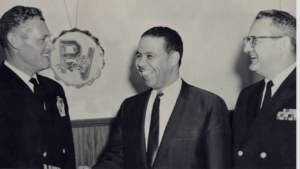
Dr. Alvin I. Thomas, PVAMU president, was instrumental in bringing the Navy ROTC program to Prairie View.
However, Dr. Alvin I. Thomas saw an opportunity for Prairie View. Dr. Thomas was the school’s third president and a proud World War II Army veteran who recognized the value of Prairie View’s Army ROTC program. He embraced its proud history that included Tuskegee Airmen and several general officers. Dr. Thomas had also cultivated robust engineering programs and a culture of academic excellence. At the time, Prairie View was the leading producer of African American engineers and he recognized that the naval service with its burgeoning nuclear power program was seeking to attract the country’s best and brightest minds.
Prairie View would provide that as well as a vehicle for the Navy and Marine Corps to diversify its officer corps as Secretary of the Navy, John Chafee, also saw an opportunity and formulated plans and initiated correspondence for the establishment of a naval reserve officers training corps unit at a historically black college or university.
On Dec 15, 1967, Secretary of Defense Robert McNamara announced that the Navy had selected Prairie View A&M College as the first HBCU to have a Naval Reserve Officers Training Corps Unit. Captain Francis Brady was the first Commanding Officer and Professor of Naval Science. Brady was a World War II veteran and a member of the United States Naval War College and served at PV from 1968-1969.
In in 1969, five Midshipmen attended the ground school and flight training. Within weeks, all of the participants flew their first solo flights at Hooks Memorial Airport in Tomball, Texas.
Within two years, Prairie View saw its first commissioned group of students finish in 1970 known as, “The PVAMU Golden Thirteen”. Those men were:
Marvin Bell, Houston, Tx.; David Brewer, Orlando, Fla.; Ollie Buckner, Denison, Tx.; James Ealy, Palestine, Tx.; Isaac Gouldsby, Hooks, Tx.; Moses Hadnott, Beaumont, Tx.; Ronald Hall, San Antonio, Tx.; Kenneth Hinson, Center, Tx.; Harvey Mattox, Newton, Tx.; David Mosby, Greenville, Tx.; Niley Rosemond, Maysfield, Tx.; James Tarver, Greenville, Tx.; Charles White, Marshall, Tx.
In 1992, the PVAMU unit became a member of the Naval ROTC Houston Consortium that includes units at Rice University, University of Houston, Texas Southern University, and Houston Baptist University. With this establishment, college students no longer had to leave the Greater Houston area for Navy or Marine Corps officer training.
The community responded greatly to having the unit at PVAMU and this proud and historic association provides a valuable service locally and to the nation. Like the Army ROTC, many NROTC participants from PVAMU have served with distinction. Niley Rosemond and Ronald Hall were the first midshipmen from Prairie View to complete flight training in Pensacola, Florida. Female midshipmen also made notable accomplishments from the 1970s to mid-1980s, such as Wanda Leonard, who in 1979 was the first female commissioned from the PVAMU unit.
In 1978, Lafayette Carol became the first female Battalion Commander and in 1981 Vinca A. Dixon was the first female Marine commissioned. Prairie View had its largest female class commissioned with six students in 1985.
Former Prairie View mayor (2002-2016 — seven terms), Frank D. Jackson, is also a Navy veteran who began as a midshipman in the university’s NROTC unit. As a student, he majored in Geography and earned a 4-year Scholarship in Naval Science. He graduated in 1973 with a B.A. and was Commissioned as an Ensign. During his eight years of active duty, Jackson served aboard the nuclear-powered cruiser USS Long Beach CG (N) 9, the USS Coral Sea CV 43 and the USS Inchon LPH 12. He ended his active duty service at Prairie view in 1982 as an assistant professor for Naval Science – navigation and ship-handling instructor. Jackson immediately accepted a commission in the U.S. Naval Reserves and was promoted to the rank of Captain in 1995. He has served in several capacities for the university since 1982 and currently is the Assistant Vice Chancellor for Governmental Relations for the Texas A&M University System.
The NROTC program has also produced three Flag Officers within its short span of history:
Vi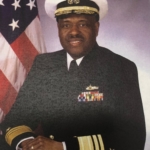 ce Admiral David Brewer III, PVAMU Class of 1970, B.S. Biology: In 1988, Vice Adm. Brewer was hand-selected by Adm. C.A.H. Trost, Chief of Naval Operations (CNO), as Special Assistant for Equal Opportunity. In this capacity, Vice Adm. Brewer was the advisor to the Navy’s top leadership, and the CNO’s personal representative at equal opportunity forums nationwide. In December 1993, he was nominated for promotion to the rank of Rear Adm. (Lower Half). In August 2001, Vice Adm. Brewer assumed command of Military Sealift Command (MSC) in his final assignment. At the time, MSC operated 124 ships and numerous shore facilities around the world. The command employed more than 8,000 people worldwide. MSC’s mission was to provide ocean transportation of equipment, fuel, supplies, and ammunition to sustain U.S. forces worldwide during peacetime and in war. Following his retirement from the Navy, Brewer was selected as superintendent of the Los Angeles Unified School District in 2006. He served until 2008, and during his time as superintendent, the reported dropout rate in the district fell by 17%.
ce Admiral David Brewer III, PVAMU Class of 1970, B.S. Biology: In 1988, Vice Adm. Brewer was hand-selected by Adm. C.A.H. Trost, Chief of Naval Operations (CNO), as Special Assistant for Equal Opportunity. In this capacity, Vice Adm. Brewer was the advisor to the Navy’s top leadership, and the CNO’s personal representative at equal opportunity forums nationwide. In December 1993, he was nominated for promotion to the rank of Rear Adm. (Lower Half). In August 2001, Vice Adm. Brewer assumed command of Military Sealift Command (MSC) in his final assignment. At the time, MSC operated 124 ships and numerous shore facilities around the world. The command employed more than 8,000 people worldwide. MSC’s mission was to provide ocean transportation of equipment, fuel, supplies, and ammunition to sustain U.S. forces worldwide during peacetime and in war. Following his retirement from the Navy, Brewer was selected as superintendent of the Los Angeles Unified School District in 2006. He served until 2008, and during his time as superintendent, the reported dropout rate in the district fell by 17%.
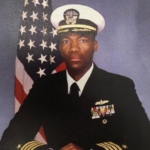 Rear Admiral Kelvin Dixon, 1981, B.S. Mechanical Engineering: In 1991, Dixon participated in Operations Desert Shield and Desert Storm as the operations officer for the United Nations Mission headquartered in Kuwait. He assisted in the establishment of checkpoints and managed the movement of all military and civilian personnel throughout Kuwait and Iraq. In 2003, 2008 and 2010 he was mobilized in support of Operation Iraqi Freedom responsible for protecting shipping in the Persian Gulf; chief of Biometrics, with responsibility for all aspects of identification and verification and Director, Iraqi Training, Advising, Operations Mission-Navy and Marine building the Iraqi Navy and Marines.
Rear Admiral Kelvin Dixon, 1981, B.S. Mechanical Engineering: In 1991, Dixon participated in Operations Desert Shield and Desert Storm as the operations officer for the United Nations Mission headquartered in Kuwait. He assisted in the establishment of checkpoints and managed the movement of all military and civilian personnel throughout Kuwait and Iraq. In 2003, 2008 and 2010 he was mobilized in support of Operation Iraqi Freedom responsible for protecting shipping in the Persian Gulf; chief of Biometrics, with responsibility for all aspects of identification and verification and Director, Iraqi Training, Advising, Operations Mission-Navy and Marine building the Iraqi Navy and Marines.
Rear Admiral Osie Combs, Jr., 1971, B.S. Electrical Engineering: Rear Admiral Combs was Deputy Commander for Submarines, SEA 92, Naval Sea Systems Command. From November 1997 to July 1998, Rear Admiral Combs was Vice Commander, Space and Naval Warfare Systems Command in San Diego California. Combs was second in command and assisted the commander in providing direction, development, acquisition and lifecycle management of command, control, communication, computers and intelligence and Information Technology for the 21st Century.
Current NROTC commanding officer Capt. Timothy Symons, Professor of Naval Science, has found great delight in being a part of the unit’s history. “I am confident that this proud history is both alive and well and firmly believe that the future is bright for the Prairie View A&M University Naval ROTC program.”

